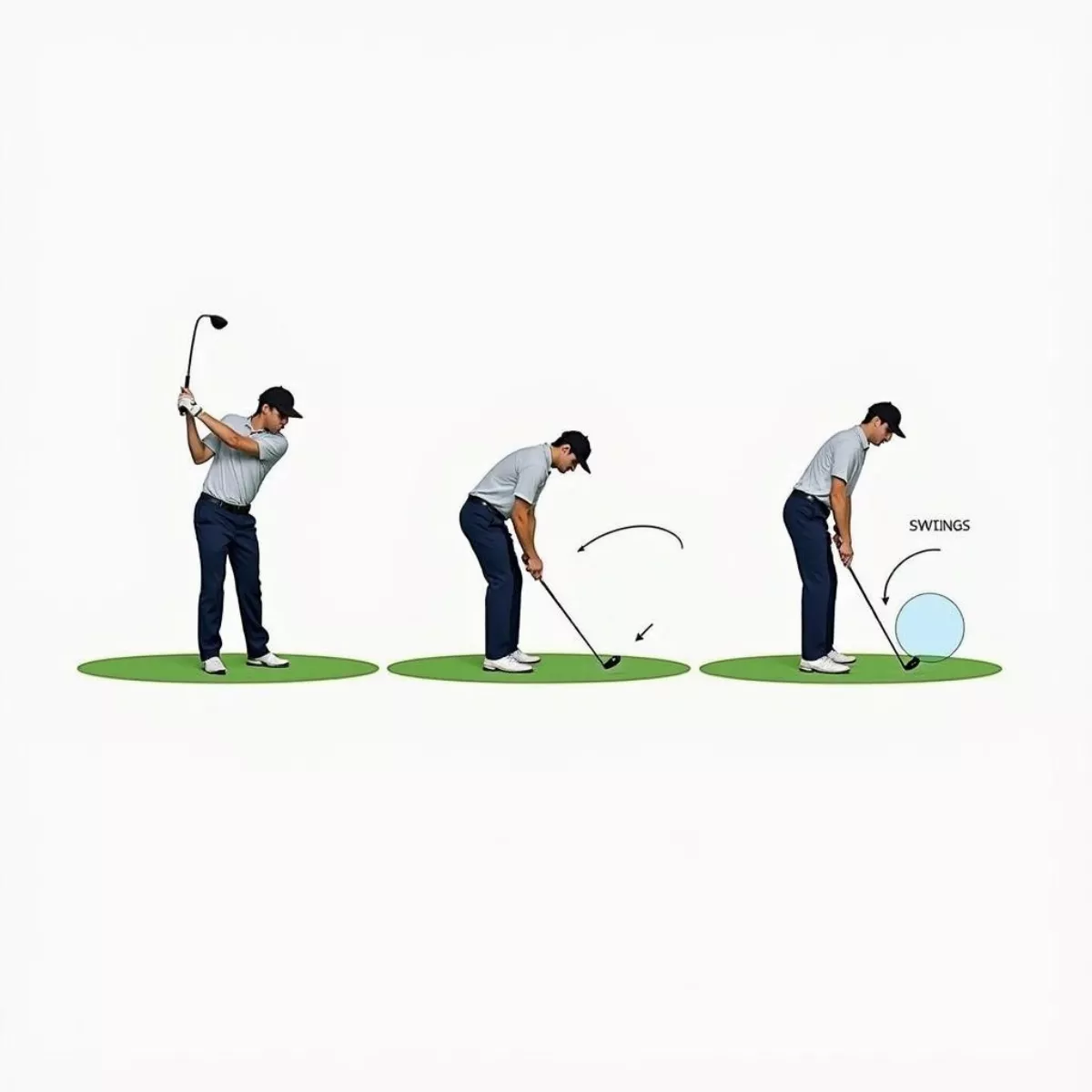There’s nothing quite like the sensation of a well-executed golf swing. Whether you’re on the driving range or the 18th hole, a perfect swing can be a game-changer, transforming a mediocre round into a memorable one. Right now, my golf swing feels amazing, and I’d like to share what I’ve learned to help you feel that joy as well. In this article, we’ll delve into the nuances of a great golf swing, share practical tips, and offer an in-depth guide to help you take your game to the next level.
The Components of a Great Golf Swing
Before we dive into techniques, it’s essential to understand the key components of a golf swing. A flawless swing combines timing, balance, technique, and mental clarity. Let’s explore these components.
| Component | Description |
|---|---|
| Grip | The way players hold the club affects their control over the ball. |
| Stance | A solid base can help with balance and power. |
| Backswing | A smooth, controlled lift prepares you for impact. |
| Downswing | A well-timed drop ensures you strike the ball with accuracy. |
| Follow-Through | A strong finish indicates a successful swing. |
1. Grip: The Starting Point
Your grip is your only connection to the golf club, so it’s crucial to get this right. The interlocking grip is popular among professionals, but the key is to find one that feels comfortable and natural for you.
Grip Tips:
- Hold the club with the fingers, not the palm.
- Ensure the grip pressure is light, as too tight can hinder your swing.
2. Stance: The Foundation of Balance
An effective golf swing starts with a proper stance. Your feet should be about shoulder-width apart, with your weight evenly distributed. A slight bend in your knees promotes balance and allows for a more dynamic swing.
Stance Tips:
- Align your feet parallel to the target line.
- Position the ball in your stance according to the club’s length.
 Proper Golf Stance
Proper Golf Stance
3. Backswing: The Key to Power and Control
A good backswing winds up the body and loads power to release during the downswing. Here’s how to execute it:
- Rotate your shoulders while keeping your lower body stable.
- Keep your left arm straight (for right-handed golfers) to create a full arc.
Drills for a Better Backswing:
- Use a mirror or video to analyze your swing and ensure proper extension.
- Practice with alignment sticks to maintain the correct position.
4. Downswing: Timing is Everything
Once you’ve completed your backswing, it’s time to transition into the downswing. This part of the swing should be smooth and controlled, allowing for optimal contact with the ball.
Key Points for a Successful Downswing:
- Start with your hips, letting them lead the motion.
- Keep your eyes on the ball until after impact.
 Golf Downswing Sequence
Golf Downswing Sequence
5. Follow-Through: Finishing Strong
The follow-through is often overlooked, but it is crucial for consistency and power. It not only signifies a complete swing but also affects your balance and accuracy.
Follow-Through Tips:
- Shift your weight to your front foot.
- Extend your arms towards the target while maintaining balance.
Practicing for Success
While understanding the core components is vital, practice is where it all comes together. Here are several ways to enhance your swing through focused practice:
- Drills: Perform specific swing drills that target weak areas of your game.
- Repetition: Set aside time for repetitive swings to develop muscle memory.
- Feedback: Use a coach or friends to get insights into your swing.
Essential Tips for Improving Your Golf Swing
- Stay Relaxed: Tension will limit your swing’s potential.
- Use Visualization: Imagine your perfect swing to build confidence and focus.
- Stay Fit: Strengthen your core and flexibility for better performance.
 Golfer Visualizing Swing
Golfer Visualizing Swing
Mindset Plays a Role
Achieving that euphoric feeling of an amazing swing isn’t solely dependent on technique. Your mental state is just as crucial. Engage in practice that promotes positive visualization and stays focused on the process rather than the outcome.
“Golf is a game of inches. A shift in your mindset can shift your scorecard!”
The Importance of Regular Feedback
Consider working with a local pro or utilizing technology like swing analyzers or apps. Regular feedback not only validates progress but can highlight areas requiring improvement.
Key Takeaways
Before you head to the course, here are the essential points to remember for an incredible golf swing:
- Proper Grip: Establish a comfortable grip without tension.
- Balanced Stance: Keep your feet shoulder-width apart and aligned with the target.
- Controlled Backswing: Generate power from a smooth, controlled movement.
- Timely Downswing: Start with your hips and keep your eyes on the ball.
- Strong Follow-Through: Finish with balance and full extension towards the hole.
FAQ about Golf Swing Improvement
1. What is the best grip for a beginner?
The neutral grip is often recommended for beginners, as it allows for a natural swing and minimizes hooks and slices.
2. How far should I stand from the ball?
Your distance should feel comfortable, usually around 6-12 inches, depending on the club.
3. How can I practice my swing at home?
You can practice your swing indoors using a mirror for feedback or a weighted club for strength training.
4. What are common mistakes in the golf swing?
Some common mistakes include gripping too tightly, improper stance, and lack of follow-through.
5. How do I know if I’m making progress?
Consider recording your swings and comparing them over time to track improvements in technique.
6. Should I practice with all my clubs?
Yes, practicing with all your clubs ensures you develop a well-rounded game and can adjust your swing according to the club’s length and loft.
7. How can I avoid tension while swinging?
Focus on your breathing and consciously relax your hands and arms before each swing.
8. What are the signs of a proper swing?
You should feel balanced, see your club face aligned with the target, and hear the sweet spot connect with the ball.
9. Is it beneficial to take lessons?
Absolutely! Lessons can provide personalized guidance and accelerate your learning curve.
10. How often should I practice?
Consistency is key. Aim for practice at least 2-3 times a week, split between the range and course.
 Golf Practice Routine
Golf Practice Routine
In conclusion, an amazing golf swing is within reach for anyone willing to put in the time and effort. By understanding the fundamental components of the swing and adopting a practice regimen, you can dramatically improve your game. Remember to keep that positive mindset, and soon enough, you’ll be enjoying the exhilarating feeling of a perfect swing just as I do! Happy swinging!

